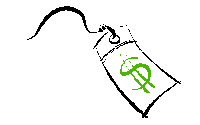
The
State Intellectual Property Office of the P.R.C. ("SIPO") has
announced the start of work on a new national intellectual property strategy. In an introductory speech, the recently-appointed commissioner of the SIPO,
Tian Lipu,
reportedly said that "The strategy-making work should be directed by Deng Theory and the important conceptions of the Three Representatives. At the same time, it should follow the following basic principles, such as government-oriented, innovation-based, coordination-emphasized, etc."
Deng Xiaoping (1904-1997) theorized that China was in the primary stage of
socialism and that the duty of the
Communist Party of China was to perfect "
socialism with Chinese characteristics." The goals of Deng's reforms were summed up by the
Four Modernizations -- agriculture, industry, science and technology, and the military -- to be achieved through a
socialist market economy.
Deng selected
Jiang Zemin as a compromise replacement for Party General Secretary
Zhao Ziyang after opposition to the military crackdown of the
Tiananmen Square protests in 1989. Unlike Deng, Jiang was a
neo-conservative, beleiving that social progress is best accomplished through gradual reform of society. His
Three Represent[ative]s speech at the 16th Communist Party Congress was credited with legitimizing the inclusion of capitalists and private entrepreneurs in the Party with the phrase "the Party must always represent the requirements of the development of China's advanced productive forces."
As with
the SIPO press release, some of the vagueries in interpreting the Three Represents may be due to translational difficulties. Even so, many Chinese, including members of the Party, found Jiang's original speech to be incomprehensible. Although open criticism of the theory is taboo, there have been reports of private unease about its implications from inside the Party. Many have disliked the equation of businessmen with "advanced productive forces," believing that this approach ignores the widening social gap between the rich and poor. Others have feared that promotion of the Three Represents could lead to another
cult of personality.
Although his term was supposed to last until 2007, in
March 2005, Jiang was succeeded in his last official post by
Hu Jintao. Signs of a widening split between Jiang and Hu had appeared weeks before, including publication of a photograph of Hu and Deng, with the image of Jiang washed out. Nonetheless, this latest transition of power was the first peaceful one since the formation of the People's Republic in
1949.
Hu and Premier
Wen Jiabao have attempted to move China away from a policy of favoring economic growth at all costs, toward a more balanced view of growth that factors in social inequality and environmental damage. Unlike
Jiang and his "
Shanghai Clique," both Wen and Hu hail from, and have cultivated their political bases in, the vast Chinese interior. Their policies have so far appeared to focus on the plight of
The Three Nongs: nongmin (peasants), nongye (agriculture) and nongcun (rural communities).
Nonetheless, it appears unlikely that there will be any sudden shifts in China's intellectual property policy under the new Chinese leadership. As Commissioner Tian also pointed out in the SIPO press release, "strategy-making work is a glorious but hard task. There is a lot of research work and coordination work need to be done."
In the meantime, you can do your own research work on "Chinese numbered polices" here.






















